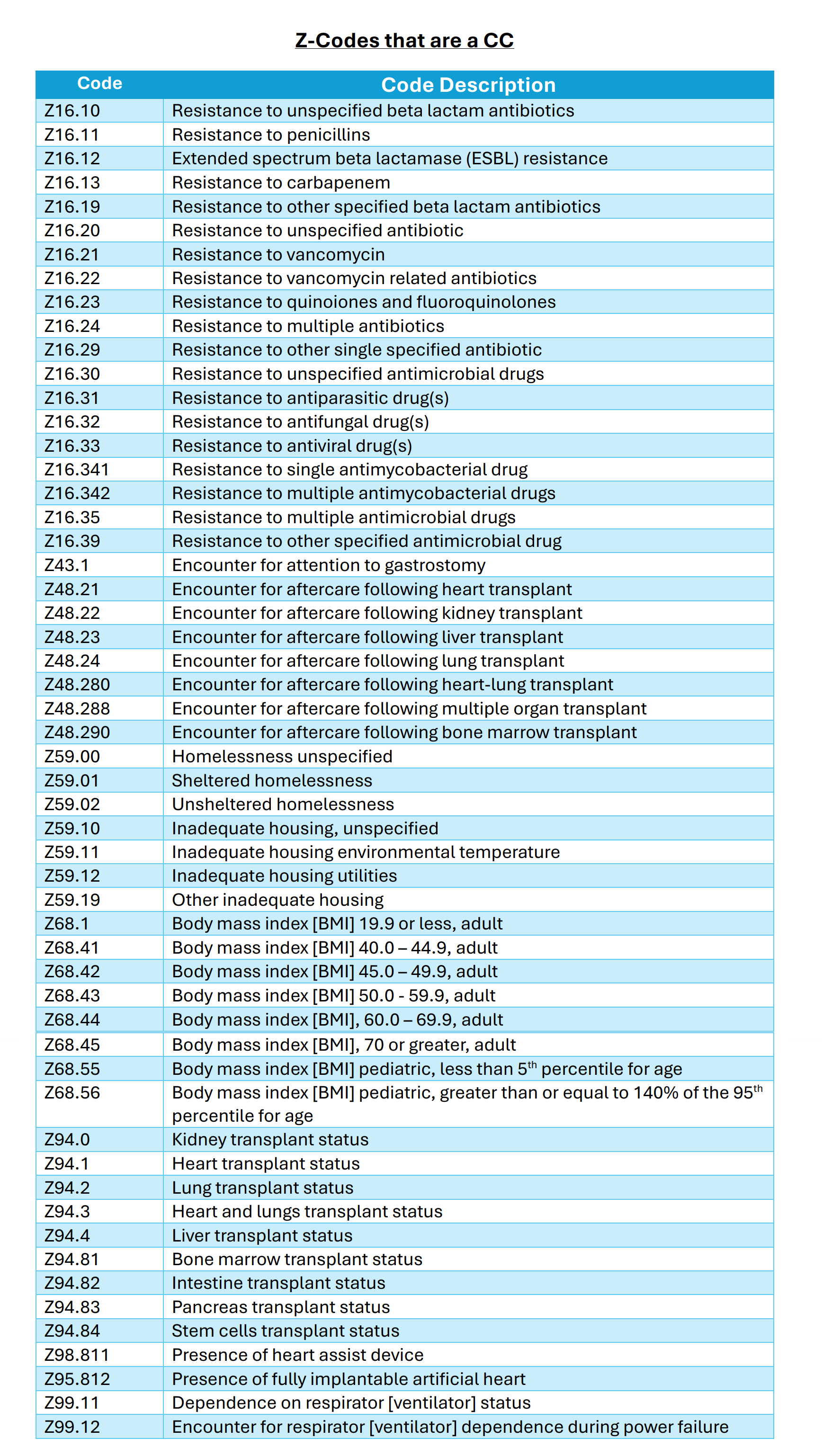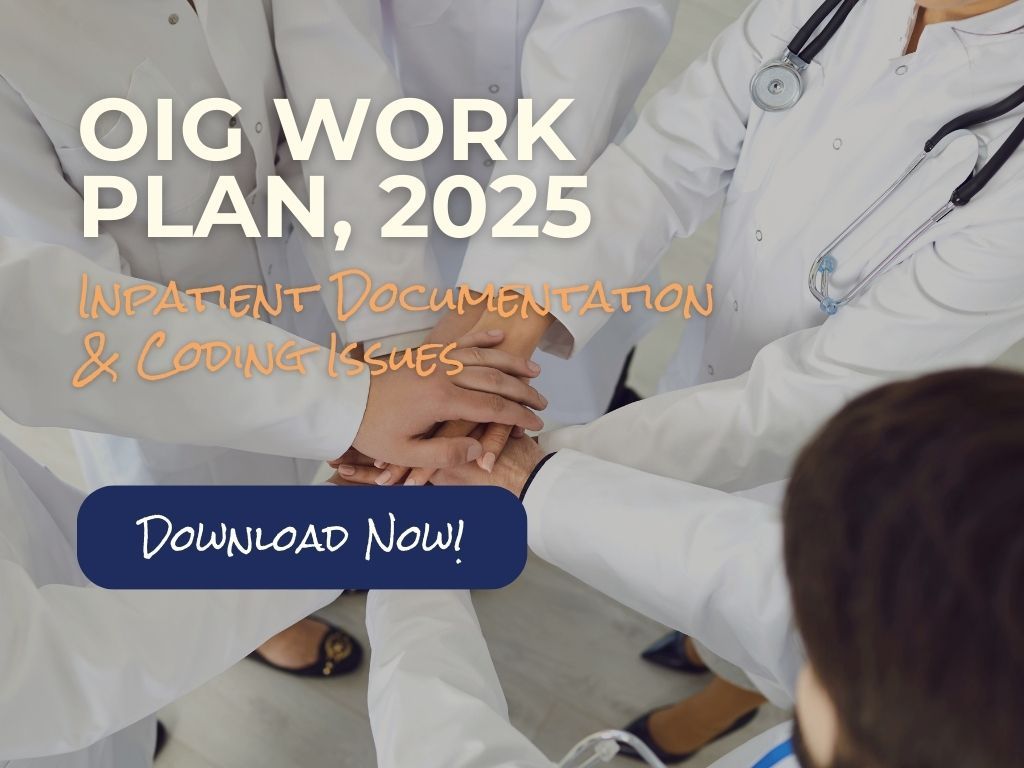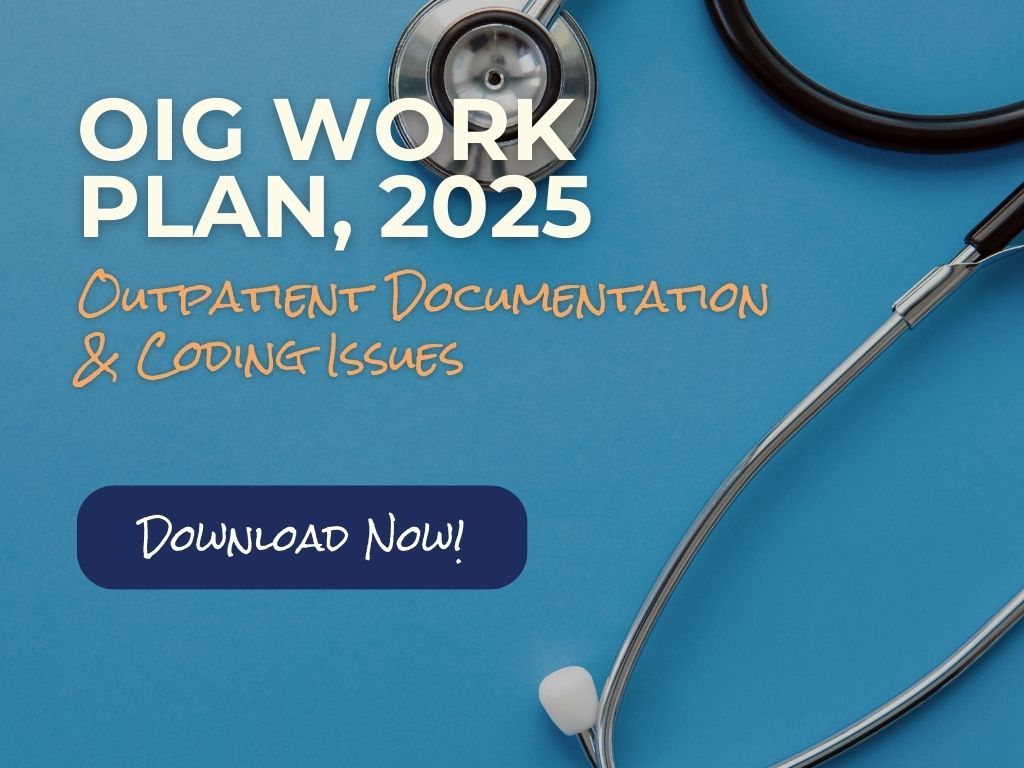A look at “Z” Codes and the importance of their capture
What Are Z Codes?

Z Codes: Z00-Z99, Factors influencing health status and contact with health services
This category of codes captures those circumstances that do not fall into disease, injury or external cause that classify into categories A00-Y89.
Several Z codes will classify as a CC and represent circumstances that can impact medical decision-making, complexity, hospital resources, and length of stay. (e.g., antimicrobial resistance, SDOH, BMI, and transplant status)
Let’s look at a few of these codes and dig into their clinical impact for patients and the providers managing their care. Individual codes were selected to demonstrate all the considerations of care for a single condition. The other codes would demonstrate a very similar picture. Click on the link to see the entire list of “Z” codes that classify as a CC at the end of this tip.
Z16.12, Extended spectrum beta-lactamase (ESBL) resistance (Classifies as a CC)
ESBLs are enzymes that destroy the beta-lactam ring in most beta-lactam antibiotics that include penicillins, cephalosporins, and the monobactam class antibiotic, aztreonam. They are associated with poor outcomes for patients with these infections.
Confirmatory testing for the presence of ESBLs can be difficult as their structural makeup is not uniform. All ESBLs do not respond to the same antimicrobial agents.
Rates for ESBL have increased from 11.1 infections per 100,000 patient days to 22.1 between 2009-2014. Rates in children have also increased from 0.28% in 1999-2001 to 0.92% in 2010-2011.
Provider choice of antibiotics is crucial for clinical response and risk of mortality. A study shows that failure to treat appropriately in the first 5 days after culture result is associated with a 64% mortality rate versus 14% with an ESBL-sensitive choice.
ESBL infections are associated with higher mortality rates, longer hospital stays, greater hospital expenses, and reduced rate of clinical response to treatment than similar gram-negative bacteria that do not produce ESBL.
Z59.00, Homelessness, unspecified; Z59.01, Sheltered Homelessness; Z59.02, Unsheltered homelessness (All classify as CCs)
Chronic homelessness is defined as, “an individual with a disabling condition who has been either continuously homeless for at least one year or homeless at least four times in the past three years” according to the US Department of Housing and Urban Development.
Mortality rates among youth and young adults are 8-11-fold higher than the non-homeless population. Rates are also high for the unsheltered homeless population.
Those experiencing homelessness have high rates of hospitalization and ER use compounded by poor access to primary care and many basic health services.
There are several specific health conditions for the homeless population. These include skin and foot problems, respiratory infections, and issues with dentition. Conditions that are more comparable with the general population are often more poorly controlled.
Patients that are experiencing homelessness present unique health risks and social challenges. Discharge planning can be a hurdle and hospital social service staff are critical.
Z94.81, Bone marrow transplant status (Classifies as a CC)
A procedure in which defective or cancerous bone marrow is replaced with healthy, new bone marrow cells. This helps with treatment of leukemia, lymphoma, sickle cell anemia, and multiple sclerosis. They may be autologous or allogenic.
Patients are subject to numerous complications such as multi-organ effects, bleeding risk, mucositis, liver dysfunction, infections, and neuropsychiatric conditions.
Those patients that are admitted to the ICU have higher rates of associated mortality.
Development of any of these conditions may influence the quality of life, duration of hospitalization, longer-term complications, and outcomes from transplantation.
Summary
Although “Z” codes may not get the attention that other codes may get in the inpatient setting, they are important to capture the entire clinical picture for certain patient populations. The examples used in this tip are all codes that risk adjust in certain methodologies as well.
References
Baggett, T. (2023). Healthcare of people experiencing homelessness in the United States. UpToDate. Retrieved on December 31, 2024 from https://www.uptodate.com/contents/health-care-of-people-experiencing-homelessness-in-the-united-states?search=homelessness&source=search_result&selectedTitle=1%7E150&usage_type=default&display_rank=1
Hooper, D. (2024). Extended-spectrum beta-lactamases. UpToDate. Retrieved on December 31, 2024 from https://www.uptodate.com/contents/extended-spectrum-beta-lactamases?search=antimicrobial%20resistance&source=search_result&selectedTitle=7%7E150&usage_type=default&display_rank=7
MD Anderson Cancer Center. (2025). Stem Cell (Bone Marrow) Transplants. mdanderson.org.
Negrin, R. (2024). Early Complications of hematopoietic cell transplantation. UpToDate. Retrieved on January 14, 2025 from https://www.uptodate.com/contents/early-complications-of-hematopoietic-cell-transplantation?search=bone%20marrow%20transplant%20complications&source=search_result&selectedTitle=1%7E150&usage_type=default&display_rank=1
Pinson, R., Tang, C. (2024). The CDI Pocket Guide by Pinson and Tang. www.cdiplus.com.











